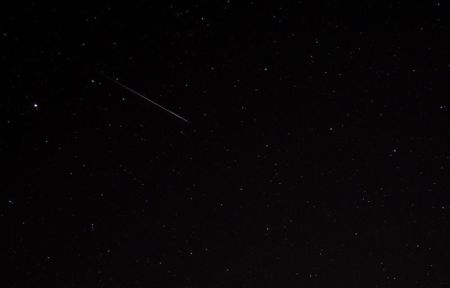Latest Space News: Most Astonishing Events in January 2017 for Stargazing Enthusiasts
2016 is finally over and the New Year is here bringing with it a host of exciting out of the world events for stargazers and astronomy enthusiasts to enjoy.

Sky watchers will have plenty of astronomical events to marvel at in January 2017. Here are the 5 most exciting phenomena occurring this month which warrant the attention of every astronomy enthusiast in the world.
Quadrantids Meteor Shower | January 3, 4
This annual meteor shower which occurs from the end of December to the second week of January, will peak around January 3 to January 4. Believed to be the result of dust grains left behind by the extinct comet 2003 EH1, the Quadrantids shower comprises up to 40 meteors per hour at its peak. The first quarter moon of the year will set shortly after midnight on Jan. 3, leaving the skies devoid of abundant light to set up an ideal viewing platform for the event. The meteors, emanating from the Bootes constellation, will be easily viewable from the Northern Hemisphere and can appear anywhere in the night sky.
Full Moon | January 12
The first full moon of 2017 will occur at 11:34 UTC on January 12 as the moon's face, located on the opposite side of Earth, is fully illuminated by the sun. This January full moon was known as the Wolf Moon by early Native American tribes as wolf packs used to howl uncontrollably in its presence. Also referred to as Old Moon and Moon after Yule, it always shines in or near the stars of Gemini. The full moon on Jan.12 is the only time the moon remains in the sky only at night, whereas at other times it appears in the daytime sky as well.
Venus at Greatest Eastern Elongation | January 12
Venus, the brightest planet in the night sky visible from Earth, will reach its greatest eastern elongation of 47.1 degrees from the sun on January 12. During this time, Venus will be at its highest point above the horizon and will be clearly visible in the western sky up to 4 hours after sunset. Venus cuts a prominent figure in January's night sky as it brightens from magnitude -4.3 to -4.6 throughout the month and remains visible for almost 4 hours after sunset.
Mercury at Greatest Western Elongation | January 19
The solar system's smallest planet reaches its greatest western elongation of 24.1 degrees from the sun on January 19. While this is the best time for viewing Mercury at its highest point in the morning sky from the Northern Hemisphere, the planet actually appears a little higher for mid-northern latitudes one week earlier. Mercury can be observed very low in the eastern sky around 45 minutes before sunrise.
New Moon | January 28
This phase of the moon, caused due to it not receiving any light from the sun, will occur at 00:07 UTC on January 28. The absence of moonlight in the night sky affords stargazers a wonderful opportunity for observing usually faint objects such as distant galaxies and star clusters through their telescopes. A larger number of stars than are typically viewable will also be visible to the naked eye on this night.





















